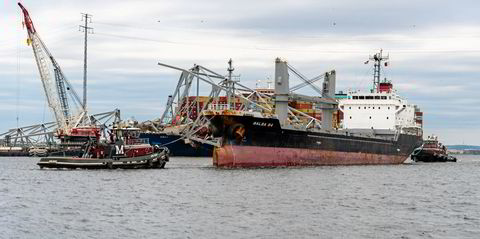Exmar LPG has added a pair of midsize gas carrier newbuildings to its growing arsenal of vessels that will have the option to use ammonia as fuel.
The company, a joint venture between Belgian gas shipowner Exmar and Stonepeak-controlled owner Seapeak, has contracted two 46,000-cbm vessels at HD Hyundai Mipo Dockyard in South Korea.
Newbuilding sources price the ships at $80.5m each, which is inclusive of the owner having the option to build them as ammonia dual-fuelled vessels.
The ships are due to be delivered by the end of 2026.
The newbuildings mirror Exmar LPG’s October 2023 order for a similar pair of 2026-delivering vessels priced at just over $75m each. The ammonia-fuelling option adds about $2m to the contract price.
Exmar executive director Carl-Antoine Saverys confirmed the orders to TradeWinds and said the vessels are linked to the company’s fleet-renewal plans and its desire to have “future-proof vessels”.
The ships are essentially 45,000-cbm vessels but will be built with two 500-cbm deck-mounted bunker tanks for carrying ammonia as fuel, boosting their capacity to 46,000 cbm.
Saverys stressed that the company still has its optionality on engine choice, although he earlier said the company had declared this on the ships contracted in October.
Then, Exmar said it had selected WinGD’s upcoming ammonia dual-fuelled engines and fuel supply systems from Wartsila Gas Solutions for what looks set to be pioneering vessels allowing for “close to zero emissions” if the ammonia option is taken up.
This is likely to depend on the engine development and the build-out of ammonia supply infrastructure with upcoming class and regulatory moves.
Exmar, which has been carrying ammonia as a cargo since the early 1990s, now lists 10 medium gas carrier newbuildings in its fleet.
Four of these were contracted by Japan’s Lepta Shipping at Yangzijiang Shipyard in China against five-year-plus charters to Exmar.
Exmar LPG now has six MGC newbuildings on order at HD Hyundai Mipo Dockyard, with the earliest two delivering being built with LPG dual-fuel propulsion systems.
The remaining four have the optionality of being built as ammonia dual-fuelled vessels.






